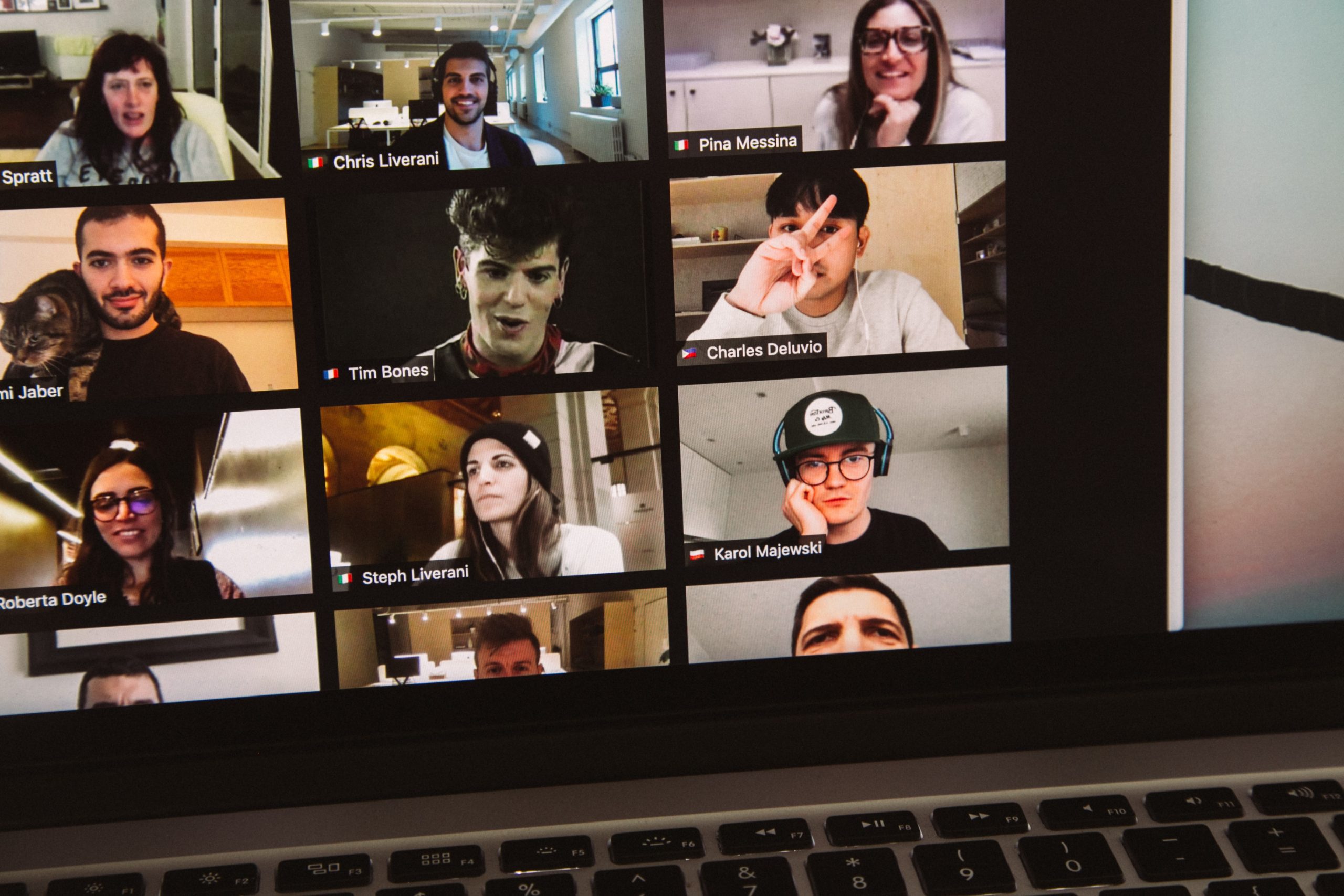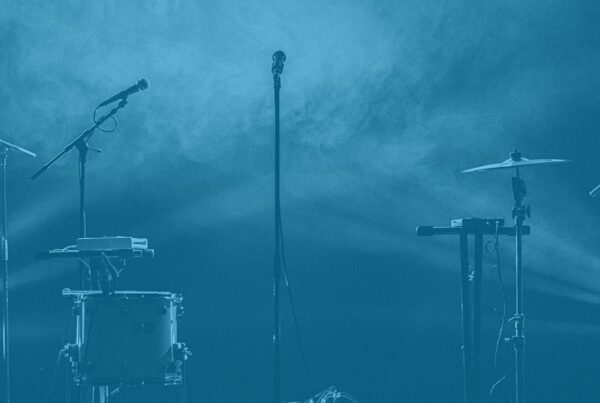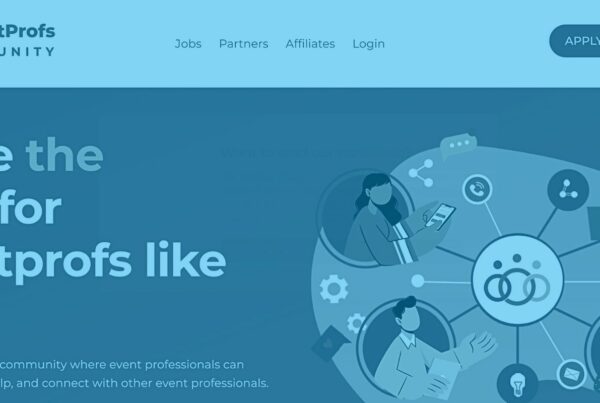It’s been 18 months since many event profs first encountered Zoom. Back then, turning on the laptop camera and joining the call was already considered a huge success in itself. But as time went by, the standards for virtual event production started rising. Presenters and team members alike learned how to look better on camera. Event technology masters, such as our hosts, Will and Brandt, gave out advice on the best virtual speaker gear. As we’re slowly stepping into the third year of the pandemic, we’ve all come to understand that looking and sounding your best on video calls matters … Or did we?
The Event Tech podcast duo thinks that there’s still room for improvement. And so, they decided to go back to basics and revisit this good old topic. It doesn’t just apply to event planners who are planning their next big event. If you ever need to hop on a call – be it with clients or your fellow team members -, you should give this episode a listen. You might feel called out, but remember, Will and Brandt are only trying to help and make the events industry a better place. Without further ado, let’s talk tech!
You Need To Look Better On Camera!
“18 months into the pandemic, I’m still spending a lot of time on presenter prep calls,” says Brandt. “At this point, we should be fine-tuning things as opposed to starting with the basics of how to look better on camera. Instead, we still start with ‘let’s not do the up-the-nose shot on the built-in camera on your six-year-old laptop in your cavernous kitchen with all the hard surfaces and the bouncy audio’. Especially if you’re trying to do a hybrid event and all that terrible audio and video is going to look even worse in a giant ballroom.”
Role Model #1: Frame.io
Will points out that the Event Tech Podcast duo talked about Frame.io and their product launch in the past. Now, that’s what looking great on camera means.
“If you haven’t had a chance, go watch Frame.io’s product announcement because it was a Hollywood-quality product announcement,” Brandt adds. “Their products allow you to live-stream footage as it’s coming into the camera so that you could start editing on the fly before the day of. Even if that’s not your world at all, just watch the first couple minutes of it. The camera just panned from the person filming on site, back to where it’s being transmitted digitally back to the editor back up to the front. It was absolutely beautiful. Took an enormous amount of rehearsal. But that’s part of it too,” Brandt says.
Role Model #2: Apple Keynote Speakers
And speaking of virtual event rehearsals, let’s talk about Apple keynotes. “Steve Jobs would get the entire executive team to take off a week from work and work on the presentations,” explains Brandt. “They would run them over and over again, test everything within an inch of its life. So there’s a reason those keynotes looked good. Anytime I’ve got an executive showing that they want to be Steve jobs, doing the tech keynote in front of the giant LED wall behind them, but then they don’t want to practice.”
“Every presentation Apple has done has been better than the last one as far as the transitions, the quality, and the tightness you can get from a prerecorded bit of content. That’s a whole other thing that we can get into: prerecorded versus live. Both examples are prerecorded things. And they demonstrate how you can do these fully digital presentations in a way that’s extremely cost-effective for what it is comparing to filling a room full of people with air flights and hotels for a two-hour presentation. It gets the job done effectively,” he says.
YouTube Creators Know How To Look Better On Camera
At this point, you might be thinking: ‘But I’m not Apple, so Zoom is good enough for my virtual events‘. Well, Will has something to say about that. “There is an in-between that isn’t extremely expensive and quite easy to do. You see it all over YouTube. I’m just shocked at how many times I have conversations with event professionals and they say they don’t watch YouTube. But they should! You can’t only watch high production television and movies, and then only be on Zoom calls. You need to see that in-between. And YouTube is a perfect example of how people are doing the in-between and how to look better on camera.”
To give a concrete example, Will gives a shoutout to Noah Kagan. “He started off doing the laptop webcam stuff because he was trying to figure out YouTube, but he wanted to take it seriously. Over the last year or so, his production value got better and better. And now, he’s in a studio. He has a giant neon sign behind him. He took a thousand-dollar camera, painted a wall black behind him, got a nice mic that hooked directly to the camera, and recorded a good quality presentation. And he had a good editor doing it.”
“You don’t need to spend a lot on production to look better on camera,” he says. “You don’t need to be on an XR stage or have one continuous cut. I just want to see some quality video and audio. It’s about what you need to exactly say perfectly in time rather than just a screen-share of a PowerPoint.”
You Never Know Who’s Watching
Brandt still sees executives who are getting paid really well yet still don’t care about how they look on video calls. “We’re 18 months into the pandemic – people are starting to notice these things now. That’s why it’s important. It’s now getting to a point where attendees and other executives notice. Also, potential jobs and employers might notice that you’re showing up to the meeting in the tech equivalent of cut-offs and flip-flops.”
Brandt also agrees with Will’s point about YouTube. “When you think about Marques Brownlee and other YouTubers who use multiple 4k cameras and have high-end max editing 24 hours a day for a YouTube channel, you realize that it’s no longer kids in their basement doing unboxing videos. The quality of YouTube and even tech talk is getting insane.”
“We, as an industry, have to start upping our game as well. I get it: we all thought we’d be done by now and we’re all tired. We just want to get back to our in-person audiences and have it be the way that it was before. It’s never going to be the way that it was before, though. The landscape is changed forever. It’s just so difficult when you see someone who’s just not making an effort. Even in team calls, people are still calling from wherever random place they plopped down with their laptop for an important call. You would never do that in person. And I’m starting to get offended by it.”
Looking better on video calls is a little step that goes a long way. “Internally at Endless, we shipped these $200 noise-canceling headsets,” Will says. “And I encourage people to use them. It’s this easy thing that you can do to make the meeting more efficient, higher quality, and present yourself better.”
 Quality Production Matters, Now More Than Ever!
Quality Production Matters, Now More Than Ever!
“As a presenter, I’ve been surprised to see how many production companies are handling the situation poorly,” Will says. “It’s been a year and a half and this is basic stuff. I did a presentation and no one told me that my audio was clipping. I didn’t know because I could only hear myself, not the final product that went in the stream. Towards the end, I saw someone say: ‘Will’s audio is crunchy’. I watched the recording afterward and it got fixed, probably because I dropped my audio a little bit … But this is simple production stuff. If I was onsite and my mic was rubbing against my beard, I hope someone would have told me so I could have fixed it.”
Virtual keynotes and speakers will stay, even when we make a full return to in-person events. “I see a future in the production world where we’re going to be using celebrity clips in between presentations, for example,” says Will.
Brandt fully agrees with Will. “Remote presenters are going to be a bigger thing than it has been in the past. If I’m a celebrity and I can get paid half as much to stay at home, I’m going to do that every day of the week. I’m pricing my own presentations accordingly. If you want me to present remotely, I can do more presentations too. There’s evidence in that with the rise in popularity of Cameo, which is where you can pay a B-list celebrity to record a message for you.” They know that it pays off to look better on camera and so should you.
Here’s How To Look Better On Camera
Hopefully, Will and Brandt have convinced you that you should up your presenter game – be it at internal company calls, job interviews, or at your next big event. But where to start?
Here’s Will’s advice. “Listen to our three-part series on all the equipment that you need to make your presentations better. There’s one about audio, video and lighting, and backdrops. Secondly, PowerPoint is dead. I use it when I have to show graphs and pictures, but in my keynotes, I’m drawing on my whiteboard and making it fun. And finally, I think that people need to start calling people out. If your keynote shows up and they’re no good, tell them to go home, do rehearsals ahead of time.”
And here’s what Brandt has to say. “We need to suit up. The biggest thing we can do as an industry to encourage people to do better is to do better. When you show up looking good, wearing the metaphorical three-piece suit of the nice camera, good audio, and good lighting, it truly helps influence the people you’re talking to. And if you show up from your kitchen table with the up-the-nose shot and the window behind you, that influences people as well.”
 Don’t Let Competition Look Better On Camera Than You!
Don’t Let Competition Look Better On Camera Than You!
And if you’re still not fully convinced, remember: there’s competition for everything. “You’re competing against other events, other people’s time and attention. If you are going to be the ones that are going to go back to the way you were doing it before while your competitor is having low-barrier-of-entry, all-digital events regularly to get people into the pipeline and to move them toward their big annual in-person event, they’re going to start sucking people away,” warns Brandt.
Hopefully, this episode inspired you to look into your virtual speaker gear and got you thinking about how you can do better. Will and Brandt are curious to know if you, dear listeners, know of any other great examples in terms of the production and quality of their videos. If so, reach out to them and get the conversation going! That way, we can learn to do better together. Isn’t that great? See you soon for another insightful episode of the Event Tech Podcast!










